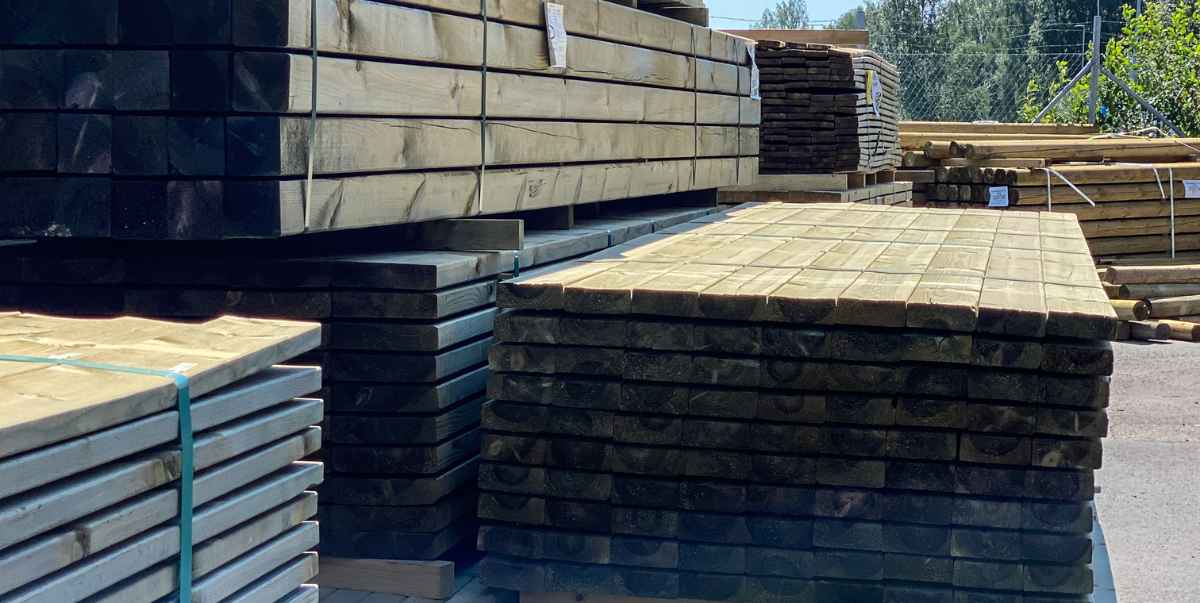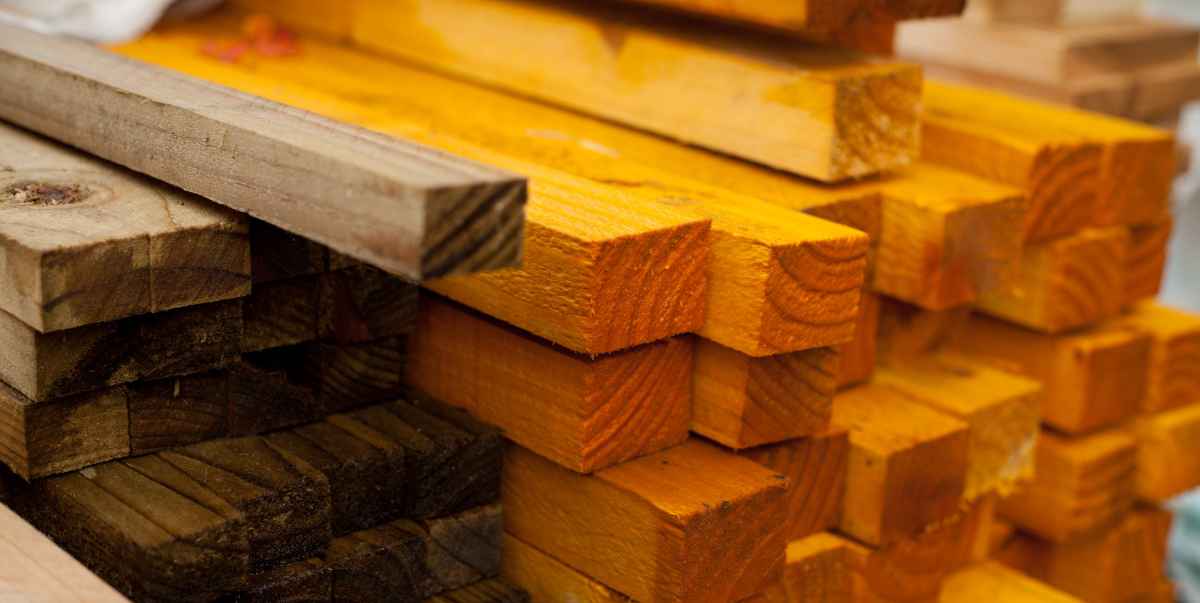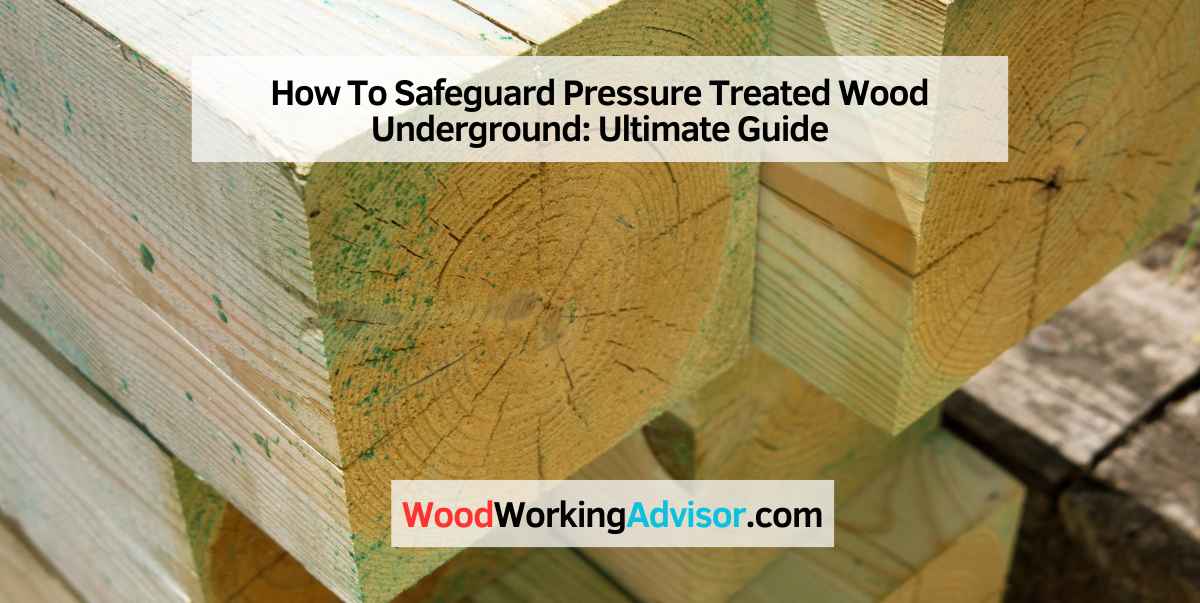To protect pressure treated wood underground, apply a waterproof sealer before burying it. This provides a barrier against moisture and helps prolong the wood’s lifespan.
Over time, exposure to moisture can cause the wood to rot, so it is essential to take preventative measures when using pressure-treated wood in underground applications. By sealing the wood, you can enhance its durability and ensure it remains structurally sound for longer periods.
We will explore the importance of protecting pressure treated wood underground and discuss the steps you can take to effectively seal and preserve the wood. By following these guidelines, you can ensure that your pressure-treated wood stays intact underground and serves its purpose effectively.
Importance Of Safeguarding Pressure Treated Wood Underground
Pressure treated wood is commonly used in outdoor construction projects, but it is important to safeguard it when buried underground. This helps prevent decay and extends the lifespan of the wood, ensuring long-term durability and structural integrity for your projects.
Preserving pressure treated wood when it’s placed underground is crucial for maintaining the longevity and structural integrity of your outdoor projects. While pressure-treated wood is designed to resist decay and insects, it is still susceptible to moisture and environmental factors that can cause deterioration over time. In this section, we will explore the two main reasons why safeguarding pressure treated wood underground is vital.
Preserving Wood From Decay
One of the primary reasons for protecting pressure treated wood underground is to prevent decay. Even though pressure treatments provide a certain level of resistance, the moist conditions found below the surface can accelerate the decay process. Moisture, combined with organic matter, creates an ideal breeding ground for fungi and bacteria that attack the wood. This can lead to rot, compromising the strength and structural integrity of your project.
To combat decay effectively, it is essential to employ protective measures that create a barrier between the pressure treated wood and the surrounding soil. One effective method is using a plastic liner or geotextile fabric. These materials act as a shield, preventing direct contact between the wood and the damp ground, thereby reducing the risk of decay significantly.
Preventing Damage From Moisture
Moisture, particularly in the form of water vapor and trapped moisture in the soil, is a significant threat to pressure treated wood underground. Excessive moisture can cause the wood to swell, warp, and eventually weaken. It can also provide an ideal environment for termites and other wood-boring insects to thrive, further compromising the wood’s integrity.
To prevent damage from moisture, it is crucial to implement proper drainage systems and ensure sufficient ventilation for the area where the pressure treated wood is installed. This prevents water from pooling around the wood, minimizing the risk of moisture-related issues. Additionally, coating the wood with a water-repellent sealer or applying a waterproofing membrane can provide an extra layer of defense against moisture infiltration.
By taking proactive measures to safeguard pressure treated wood underground, you can extend its lifespan and maintain the structural integrity of your outdoor projects. Whether it’s building a deck, fence, or any other structure, preserving the wood from decay and preventing damage caused by moisture are essential to ensure the long-term durability of your investment.

Choosing The Right Type Of Pressure Treated Wood
When it comes to protecting pressure treated wood underground, choosing the right type of wood is crucial. Different factors such as the level of treatment and the wood species used can greatly impact the durability and performance of the wood when exposed to moisture and soil. In this section, we will explore two important aspects to consider when selecting pressure treated wood for underground applications: understanding different levels of treatment and identifying suitable wood species.
Understanding Different Levels Of Treatment
Pressure treated wood is treated with chemicals to enhance its resistance against decay, insects, and moisture. These chemicals penetrate the wood, providing long-lasting protection. However, not all pressure treated wood is created equal.
There are three main levels of treatment for pressure treated wood:
- AWPA UC4A: This level of treatment is suitable for above-ground use where the wood is exposed to occasional wetting, but not in contact with the ground.
- AWPA UC4B: With a higher level of treatment, UC4B is designed for ground contact applications such as fence posts and landscaping.
- AWPA UC4C: UC4C is the most heavily treated option, suitable for wood intended to be completely submerged in water or highly exposed to soil.
By understanding the different levels of treatment, you can select the right type that matches the specific underground conditions your pressure treated wood will be facing.
Identifying Suitable Wood Species
Choosing the right wood species for your underground project is equally important. Not all wood species perform the same when in contact with soil and moisture. Here are some suitable wood species commonly used for pressure treated wood underground:
| Wood Species | Advantages |
|---|---|
| Redwood | Naturally resistant to decay and insects, making it an ideal choice for underground applications. |
| Cedar | Highly durable and naturally resistant to decay, rot, and insects. |
| Pressure Treated Pine | Affordable and readily available, treated pine offers good resistance to decay and insects. |
These wood species have proven to withstand the harsh underground conditions and provide long-lasting protection to your outdoor structures.
When selecting pressure treated wood for underground use, make sure to consider both the level of treatment and the wood species. Understanding the differences and making informed decisions will ensure that your pressure treated wood remains protected and serves its purpose for years to come.
Preparing The Wood For Underground Installation
Allowing The Wood To Dry
Prior to underground installation, it is crucial to allow pressure-treated wood to dry completely. The drying process removes excess moisture, ensuring that the wood can withstand the underground environment more effectively. To begin, place the wood in a well-ventilated area, away from direct sunlight and moisture. This will promote natural air circulation and expedite the drying process. It is recommended to leave the wood to dry for at least 48 hours or until its moisture content reaches the desired level, typically around 15%. This step is essential as wet wood is more susceptible to decay and fungal growth when installed underground.
Applying Protective Coatings
Applying protective coatings to pressure-treated wood is another vital step in preparing it for underground installation. These coatings act as a barrier, safeguarding the wood from moisture, sunlight, and other environmental elements that can cause deterioration. One of the most commonly used coatings is a water-based wood preservative. Before applying any coating, ensure the wood has dried thoroughly following the previous step. This guarantees that the coating can penetrate the wood effectively and provides maximum protection. Apply the coating evenly using a brush or roller, making sure to cover all surfaces, including the ends, which are more prone to moisture absorption. Allow the coating to fully dry before proceeding to the underground installation.
Proper Installation Techniques
When it comes to protecting pressure-treated wood underground, proper installation techniques are crucial. By following these guidelines, you can ensure that your wood stays protected for a long time. In this section, we will discuss two essential aspects of proper installation: using a proper foundation and ensuring proper drainage.
Using A Proper Foundation
One of the key factors in preserving pressure-treated wood underground is to have a solid foundation. A proper foundation helps distribute the weight of the structure evenly and prevents sinking or shifting. Here are a few important points to consider:
- Clear the area: Before installing the pressure-treated wood, clear the ground of any debris, rocks, or vegetation. This will ensure a smooth and stable base.
- Level the ground: Use a shovel or a spade to level the ground where you plan to place the wood. Creating a level surface will help prevent any future issues with tilting or leaning.
- Add gravel: Adding a layer of gravel to the leveled ground is beneficial for drainage and stability. The gravel acts as a buffer between the wood and the soil, reducing the risk of moisture-related damage.
- Compact the gravel: After spreading the gravel, use a tamper or a compactor to ensure that it is tightly packed. This will provide a solid base that supports the weight of the wood.
Ensuring Proper Drainage
Proper drainage is essential for preventing water buildup around pressure-treated wood. Excessive moisture can lead to rotting and degradation. Here’s what you should do to ensure proper drainage:
- Grade the area: To promote drainage, create a slight slope away from the wood structure. This will prevent water from pooling around it and increase the lifespan of the wood.
- Use perforated pipes: Installing perforated pipes along the base of the wood structure can help channel water away effectively. These pipes allow excess moisture to escape, reducing the risk of damage.
- Install a vapor barrier: Adding a vapor barrier between the wood and the soil can provide an additional layer of protection. This barrier prevents moisture from seeping into the wood, significantly prolonging its lifespan.
By focusing on these crucial aspects of proper installation, you can ensure that your pressure-treated wood remains protected underground. Remember to follow these guidelines to maximize the durability and longevity of your wood structures.

Regular Inspections And Maintenance
Regular inspections and maintenance are essential for protecting pressure treated wood underground. By regularly checking for signs of decay, pests, and water damage, you can prevent costly repairs and ensure the longevity of your pressure treated wood.
Checking For Signs Of Decay
One crucial aspect of regular inspections and maintenance for pressure treated wood that is installed underground is checking for signs of decay. Over time, the wood may start to show signs of deterioration due to various factors such as moisture, insects, and fungal growth. By regularly inspecting the wood, you can catch any early signs of decay and take appropriate action to prevent further damage.
It is essential to carefully examine the wood for any visible signs of decay, such as soft spots, discoloration, or areas that appear to be crumbling or falling apart. Use a screwdriver or a similar tool to gently probe the wood’s surface, checking for any soft or rotted areas. This inspection is crucial because early detection allows you to address the issue promptly and minimize any potential damage.
Applying Preservative Treatments
To protect pressure treated wood that is installed underground, applying preservative treatments is necessary. These treatments help to further enhance the wood’s resistance to moisture, insects, and decay-causing organisms. Applying these treatments regularly can significantly extend the lifespan of the wood and reduce the chances of decay over time.
One effective way to apply preservative treatments is by using a brush or sprayer to ensure complete coverage. Make sure to follow the manufacturer’s instructions and guidelines when applying the treatment, as each product may have specific recommendations. Applying the treatment evenly and consistently will ensure that all areas of the wood are adequately protected.
It is also important to note that different types of preservatives may be available, so choose the appropriate one for your specific needs. Some preservatives are specifically formulated for underground applications, offering increased protection against soil organisms and moisture. Consult with a professional or research the best options available to ensure you select the most suitable treatment for your pressure treated wood.
In addition to applying preservative treatments, maintaining proper drainage around the pressure treated wood is crucial. Adequate drainage helps prevent the buildup of excess moisture, which can contribute to decay. Ensure that the surrounding soil is properly graded to allow water to flow away from the wood, and consider using a layer of gravel or crushed stone as a foundation to promote drainage.
By regularly inspecting the pressure treated wood for signs of decay and applying preservative treatments, you can protect it from the harsh underground conditions. Proper maintenance and attention to detail will help prolong the lifespan of the wood, ensuring its durability and structural integrity for years to come. Remember that prevention is key when it comes to protecting pressure treated wood underground.
Conclusion
Protecting pressure treated wood when it’s buried underground is crucial for its longevity and durability. By following the steps outlined in this blog post, you can ensure that your wood stays protected from moisture, pests, and decay. From using proper wrapping techniques to installing a barrier, these methods will help you safeguard your investment.
Remember to regularly inspect and maintain the wood to preserve its integrity and prevent any potential damage. Rest assured, your pressure treated wood will stay strong and functional for years to come.


